Once the epitome of heavyweight adventure tourers, BMW’s all-new R 1300 GS is now the lightest of the bunch
The all-new – and I really do mean all-new – BMW R 1300 GS is a huge departure from the preceding R 1250 GS. The models have virtually nothing in common with one another apart from carrying the same GS moniker, being powered by a boxer twin engine and both sporting BMW’s unique suspension setup on either end.
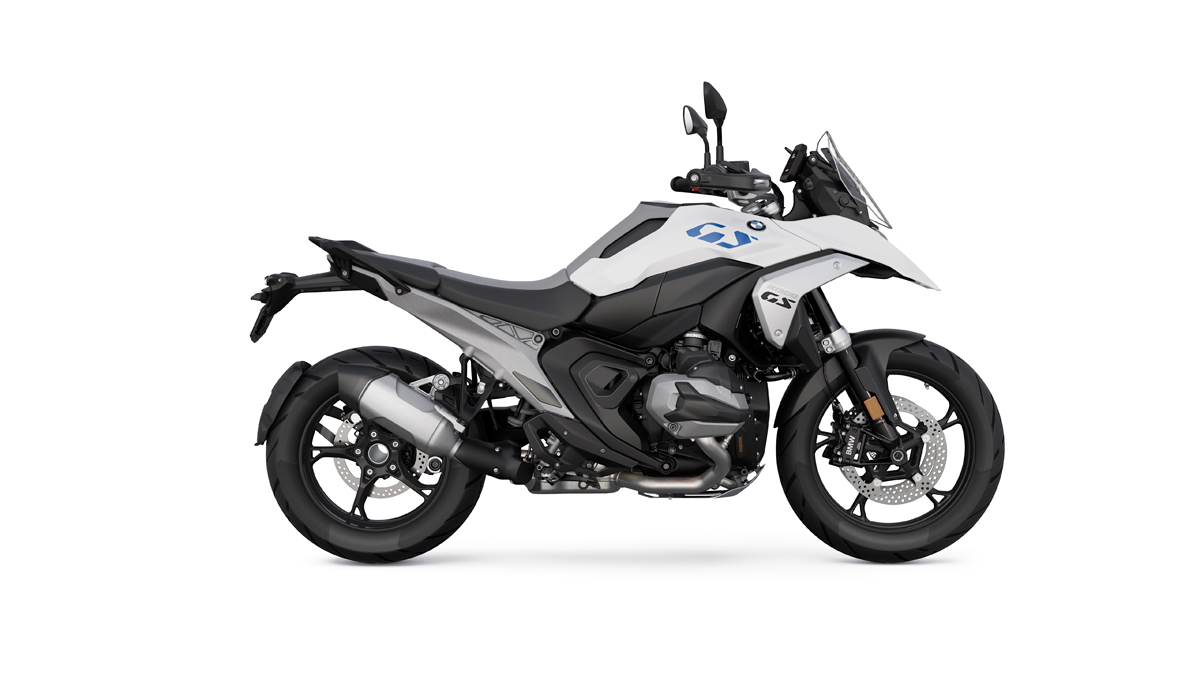
And while it seems every new adventure bike these days professes more power, more electronics and more goodies, invariably with a good dose of extra weight, the big news around what’s widely regarded as the segment’s heavyweight is that BMW has come to the party with a new rig that is not only more powerful and loaded with more tech than ever, but one which is physically smaller and lighter than its predecessor.
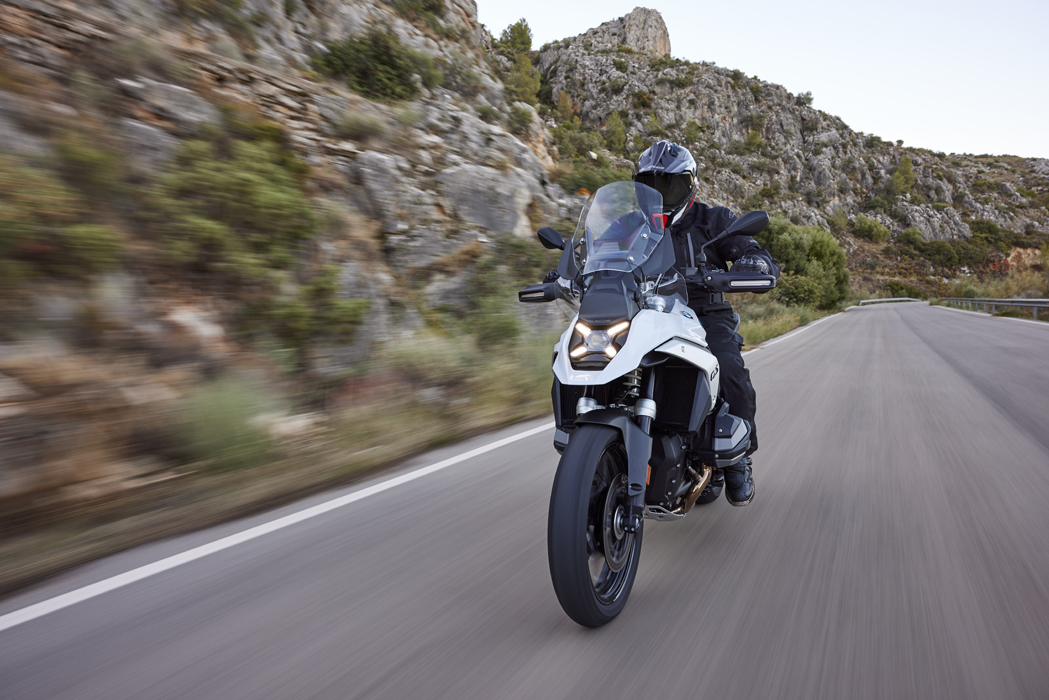
The GS is the lifeblood of the German manufacturer, so it needed to get the latest version of the platform spot-on. With virtually nothing carried over from the 1250, first and foremost there’s a new pressed-steel frame replacing the previous tubular-steel unit, which BMW says is better at handling the rigours of off-road use than aluminium.

A heavily revised Shiftcam-infused Boxer twin sits nestled in the new frame, while the Telelever front suspension and Paralever rear suspension remain, albeit heavily tuned.
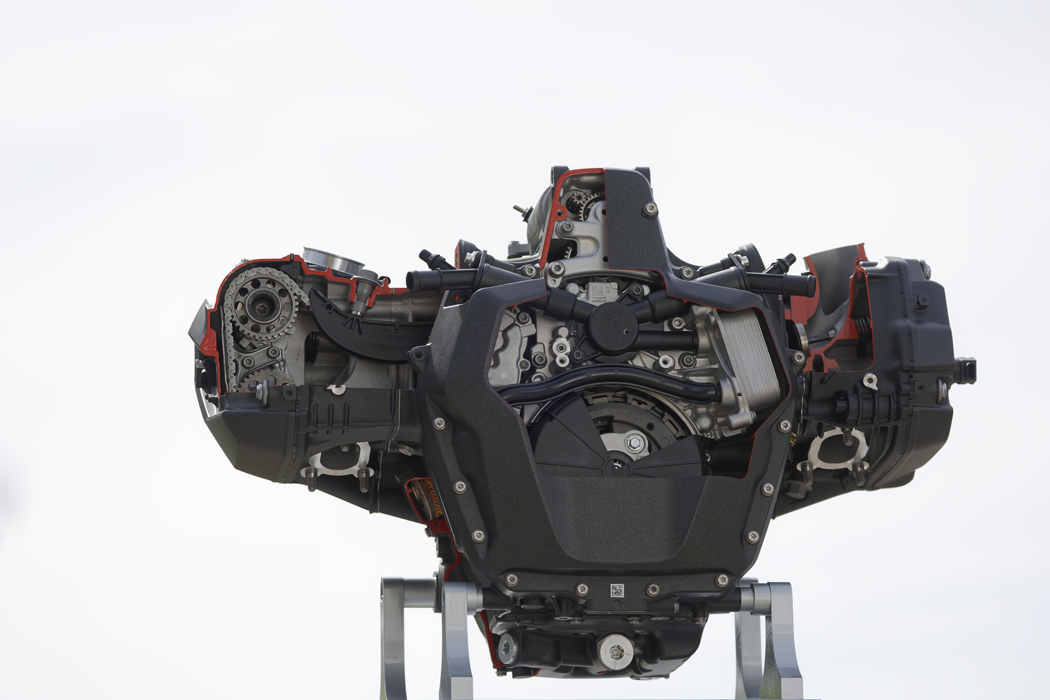
The outside packaging is really different – the 1300 looks sleeker and less Meccano-like than the 1250 – an aluminium tank replaces the old plastic job and there’s a whole heap of new tech on board, too. While there’s an options list as long as your arm, the base-model R 1300 GS comes with extra goodies that were options on the 1250, like heated grips, keyless ride, tyre-pressure monitoring, engine torque control, ABS Pro, cruise control, a lightweight lithium battery and four rather than three ride modes.
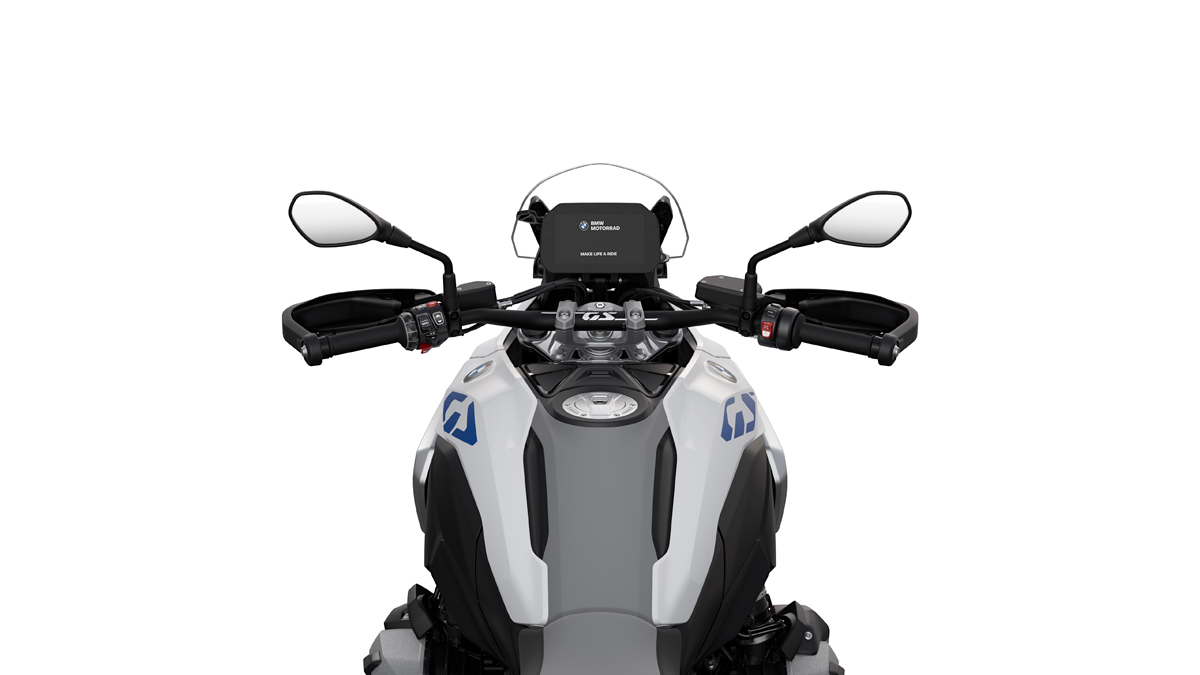
As I suited up for the world launch ride in Spain the first thing that struck me was just how small the 1300 is compared to the outgoing 1250. It’s no less so when you’re met by the meaty 6.5-inch TFT display and wide MX-style ’bar as you climb onboard. Piloting the 1300 will be a whole new experience for anyone familiar with previous GS models. It even feels smaller and skinnier than the KTM 1290 Adventure R sitting in the AMCN garage right now. Combine its much smaller stature with a solid weight reduction and this is the least daunting GS yet. A brilliant feat of engineering, really, because one of BMW’s most important models just became a far more manageable package for far, far more riders.

At the heart of the new rig is, of course, a new Boxer engine. It’s 3.9kg lighter than the 1250 donk to be exact, and it’s also more compact. Unlike the 1250, the cylinder heads on the 1300 are mounted symmetrically opposite one another rather than staggered fore and aft slightly, which BMW has achieved by running the cam chain for the starboard cylinder on the front-facing end of the cylinder and the chain for the port-side cylinder on the rear-facing end of the engine. Looking down, it’s so much easier on the eyes which, like mine, prefer things symmetrical and ordered.
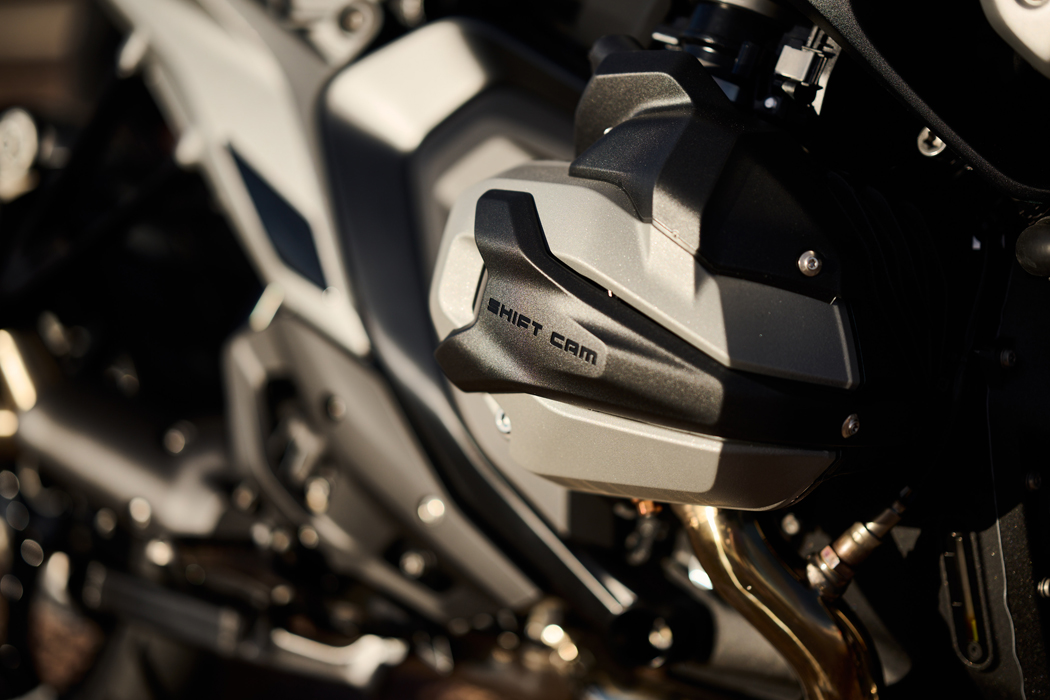
The engine is also significantly shorter thanks to the six-speed gearbox now being below the engine rather than behind it. This has the bonus of lowering the centre of gravity even further – already a strong point of the 1250. The new mill is exactly 1300cc in capacity and retains the Shiftcam system of the previous model. Maximum power has increased to a claimed 107kW (145hp) at 7750rpm and there’s a fat 149Nm of torque on offer at 6500rpm. Those figures equate to a power increase of 7kW and 6Nm torque over the 1250. Granted, they aren’t huge gains, but in a package that’s a good chunk lighter, it’s noticeably more spicy when you need it to be. We’re not talking 170hp Multistradas here, but show me the person who truly wants or can use more than 145 horses in their big-bore adventure mount anyway.
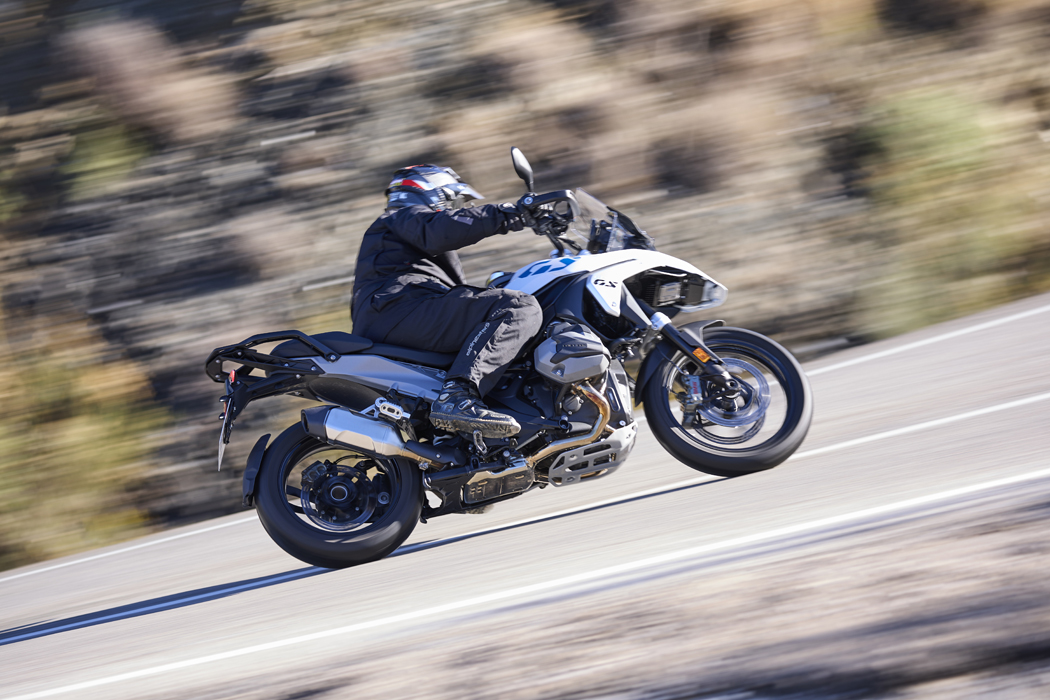
Like all GSs that have come before, the 1300 – while still happy to rev clean and strong to its 9000rpm redline – it’s happiest and most rewarding to use when riding that torque curve between 3500rpm and 7500rpm. You can give it a flogging, but you’ll get a better experience if you ride the torque. Say you’re on a dirt road and playing with the sideways characteristics of your new GS. If you keep the revs high, you’ll be ripping insane and slightly scary skids in the loose stuff. Use the torque curve, run a higher gear and you’ll be rewarded with long, controllable power slides that will have you readying your entry for Dakar. It’s the same on the blacktop, just sans skids. The delivery is very refined for an engine that has two huge 650cc slugs firing off in opposite directions, as you would expect from a donk that has evolved over 40 years.

The room created by the smaller engine has also allowed BMW to bung a muffler behind the engine to meet Euro 5 hurdles, with a compact and less monstrous end can exiting the right-hand side. This clever solution not only looks better, but the weight sits lower, improving the centre of gravity.
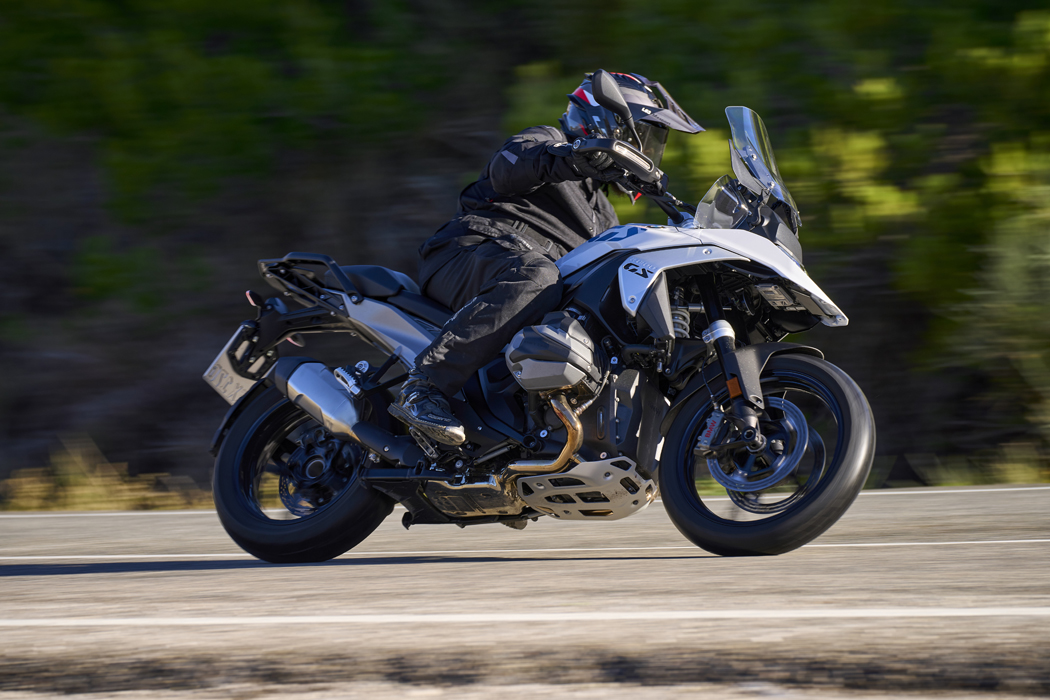
The engine, while quite different, is still more evolution than revolution but the new frame is a different matter. Now pressed-steel rather than tubular-steel, BMW says the design is more compact and rigid than the 1250’s. The rear subframe is made from cast alloy, which is said to be stronger, lighter and I’ll also say neater than the 1250’s deck of tubes.

The six-speed amalgamation of mechanical cogs on the 1300 is, as mentioned, now located under the engine rather than behind it; shorter engine and lower COG means win-win, right? Yes, kind of. The placement might be optimal, but I found the shifting notchy and a bit rough around the edges. It didn’t do anything wrong; it just feels unrefined and, in a drivetrain as smooth as this it stands out like a dog’s dangly bits. In the 1300’s defence, it had bugger-all kilometres on the clock so it should free up and be just as smooth and pleasant as I know the 1250 to be.
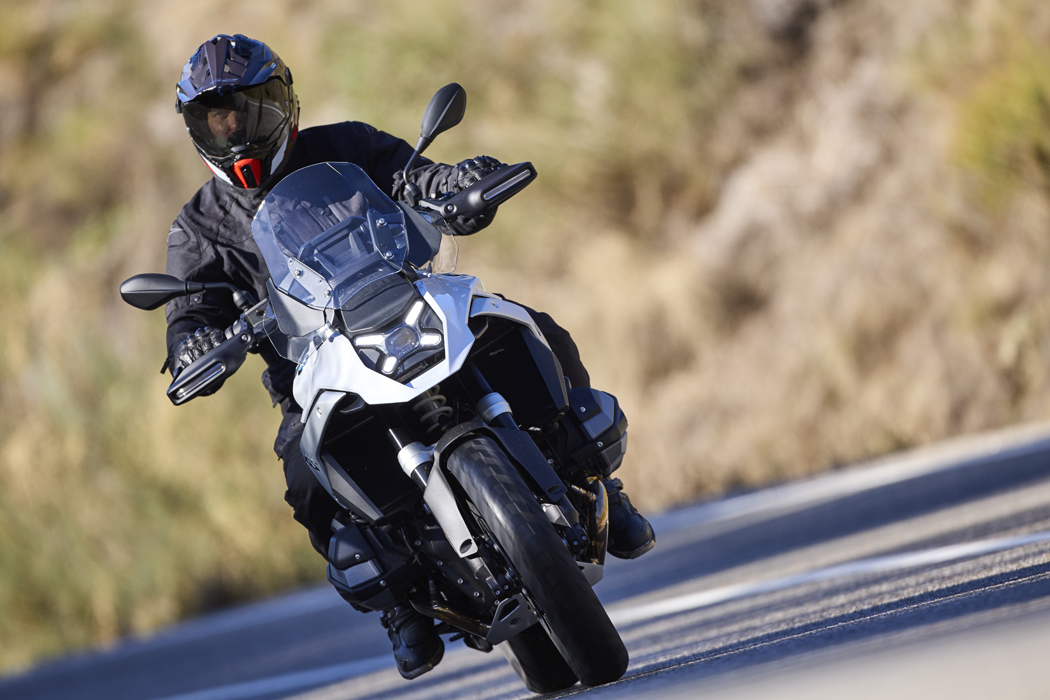
From a company that once produced the best quickshifter in the business, the unit on the R 1300 GS is close to unforgivable. I rode two different R 1300 GS models at the launch. Both were the same and, according to the talk around the water cooler, I wasn’t the only one who found it lacking, compounding the gearbox’s rough feels. If you even think about resting your boot on the gear lever, it sends the GS into an electronic limbo land that feels like a false neutral, except there’s no mechanical input to create it. Move your boot away from the lever and drive is instantly returned. The 1300’s cog-box is equipped with a torsion magnet that is designed to sense pressure through the lever and, according to BMW, this should result in better gear changes. But the system needs refining, because the slightest touch messes with the quickshifter’s feng shui and there were far too many occasions where I discovered a false, false neutral, especially off-road. Once you train yourself to keep your clod-hopper away from the lever, the issue is avoided.
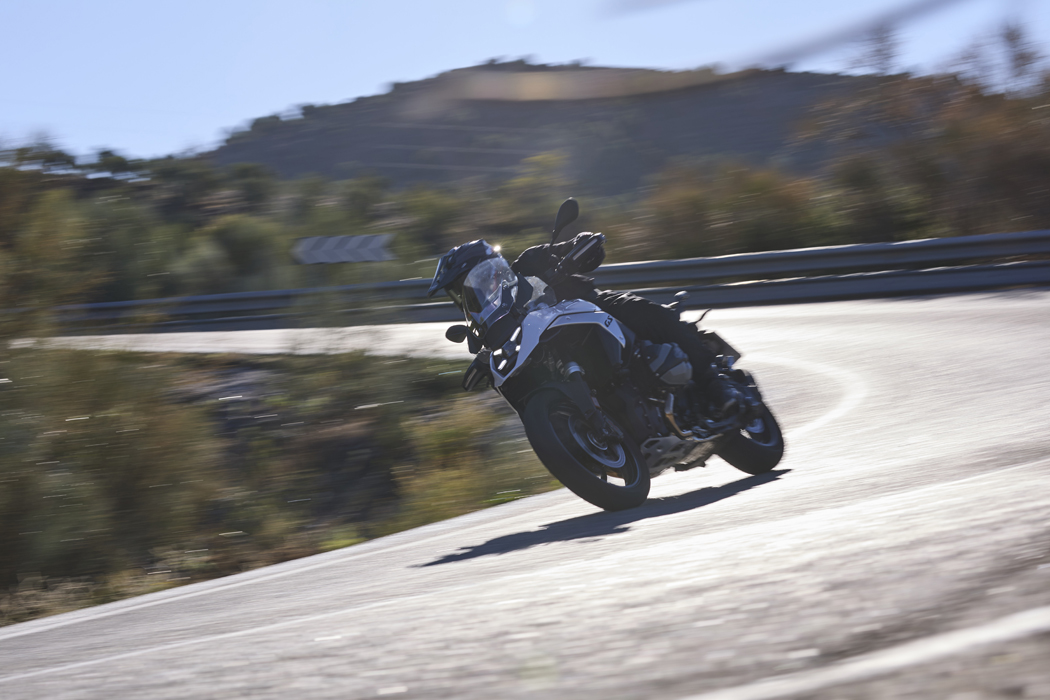
Apart from shifting through gears, as a road-going concern, the R 1300 GS is about as good as it gets if you want to get your Lonely Planet on. The GS has earned itself a reputation – and rightly so – for being a devilishly fun, comfortable and competent bike to throw through a deck of corners, and I tell ya, the 1300 smokes the 1250. And that is saying something because in the right hands, the 1250 was a slayer of dedicated sports machinery, especially when things got really tight. The 1300 is next level, and especially in the mix of dry, semi-dry and wet conditions I rode in.

With a welcomingly low police presence around the hills of the Rhonda area of Spain, let’s just say I acquired an understanding of how the GS gets along if you put common sense to the side for just a minute. It’s a demon!
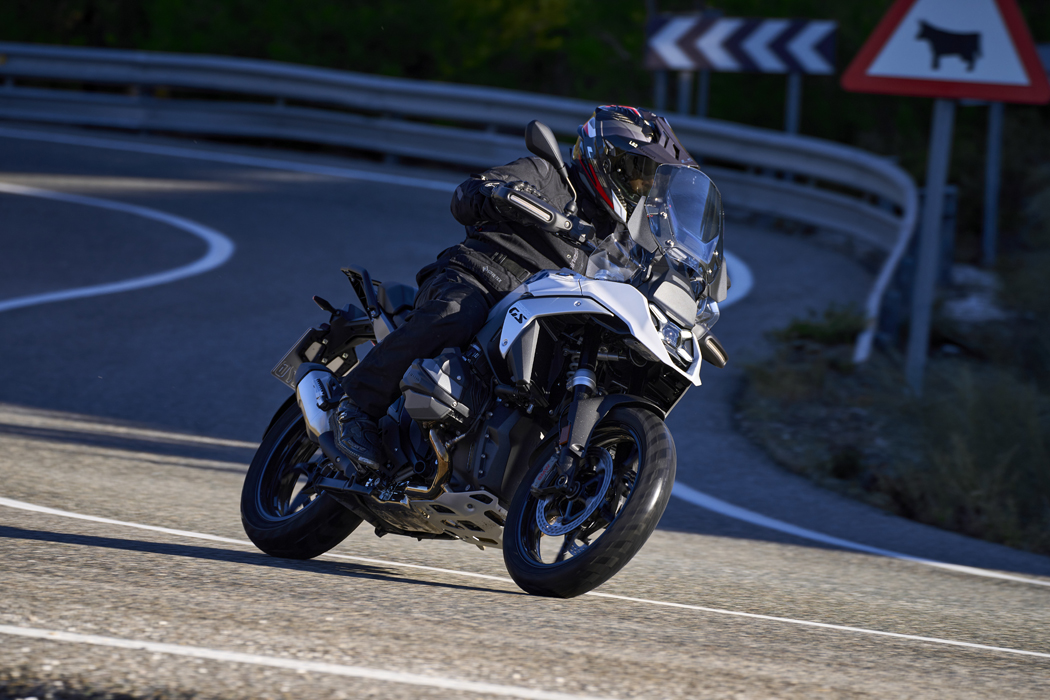
Comfort seems top notch, and you’d expect nothing less from a GS, but my ride was more ‘sport’ than ‘tour’ so we’ll come back to you when we can get some decent kays under our belts in long-haul Australian conditions.

Nestled at the front is a new Evo Telelever suspension setup and Evo Paralever system on the rear. There’s the option of a so-called sports suspension kit that adds more firmness and an extra 20mm of travel at each end, increasing it to 210mm and 220mm front and rear respectively. There’s also the option of upgrading to electronic suspension with a lowering function which reduces the ride height both at a standstill and while travelling slowly. This can be adjusted to suit your preferences – you can set it to be permanently on the low setting, for example – through the TFT gateway to the electronic heart of the GS.

Despite the revised suspension and new chassis, the 1300’s handling and rolling comfort will be familiar to previous GS pilots. The ride quality is plush without being soft but it stands up very well to spirited riding as well. If things get hectic, heavy riders may find the rear sits a bit too low in its stroke and you’re forced to lift the rear-end up and over the shock on quick changes of direction.
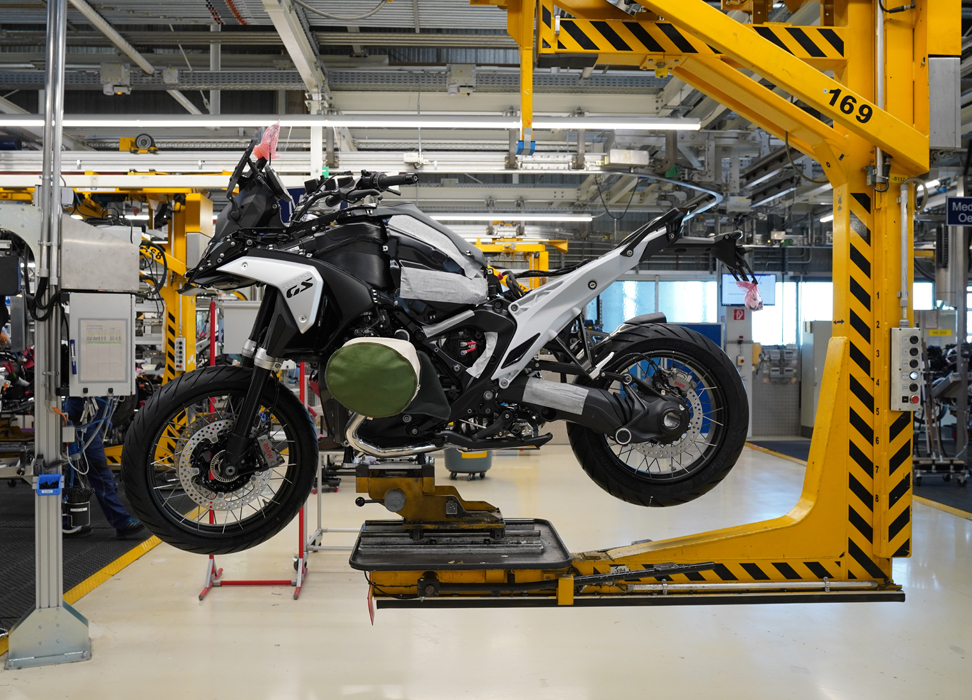
So, unlike myself, the R 1300 GS has lost a few kegs and it’s had a substantial impact on how you’ll feel and how it feels. The GS design team is of the opinion that the ever-increasing size of adventure bikes is a real-world issue, not just from a performance standpoint, but even for owners who have to try and push a colossal bike around the shed or pick the bugger up. I agree with the philosophy that bigger isn’t always better when it comes to adventure bikes. In standard form, BMW claims the R 1300 GS weighs in at 237kg ready to ride, 12kg lighter than the 249kg R 1250 GS.

A 12kg weight loss program might not seem like much, but it’s taken the GS – a model that was considered the heavyweight of the mega-adventure bikes don’t forget – to being the lightest production bike in the big-bore adventure category.
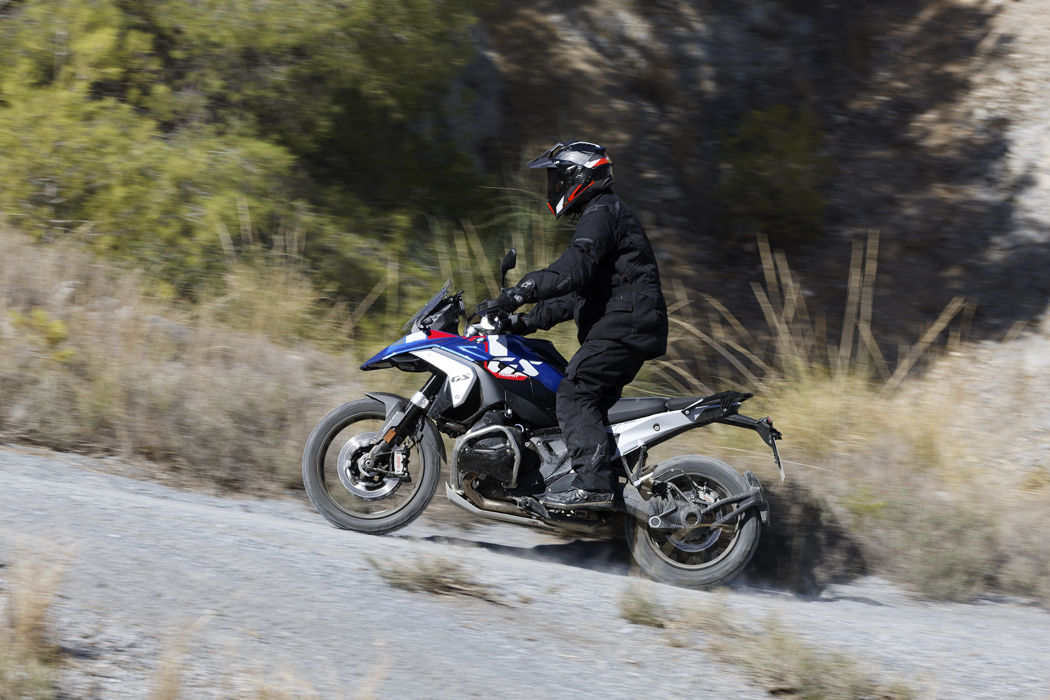
Okay, yes. We are going to do this again because I like to compare things – I don’t get out much. KTM’s mighty 1290 Adventure S tips the scales at a claimed 220kg dry or roughly 244kg with its belly full of fluids. Triumph’s Tiger 1200 GT slaps the scales at 245kg and, until the new GS lobbed, Ducati’s Multistrada V4 was the lightest of the bunch at 240kg wet. Suzuki’s popular V-Strom 1050 tips in at 242kg wet with Yamaha’s Super Ténéré 1200 a scale-busting 265kg. If claimed weights are to be believed, then BMW’s R 1300 GS is now the lightest of the adventure-tourer breed. I pray to the various sky gods that this becomes the adventure bike zeitgeist and the manufacturers go head-to-head in a war to pare down the weight of all future models. If you don’t agree, you’ve never picked one of these suckers up and had the hernia operation that often accompanies it.

If you’re familiar with BMW’s GS range you’ll know that the bikes are jam-packed with tech and the R 1300 GS is no different. Aside from what I’ve already mentioned, in terms of noteworthy new tech, there’s now torque control, brake assist, hill start, DTC and a smartphone charging compartment with USB and 12-volt charging ports.
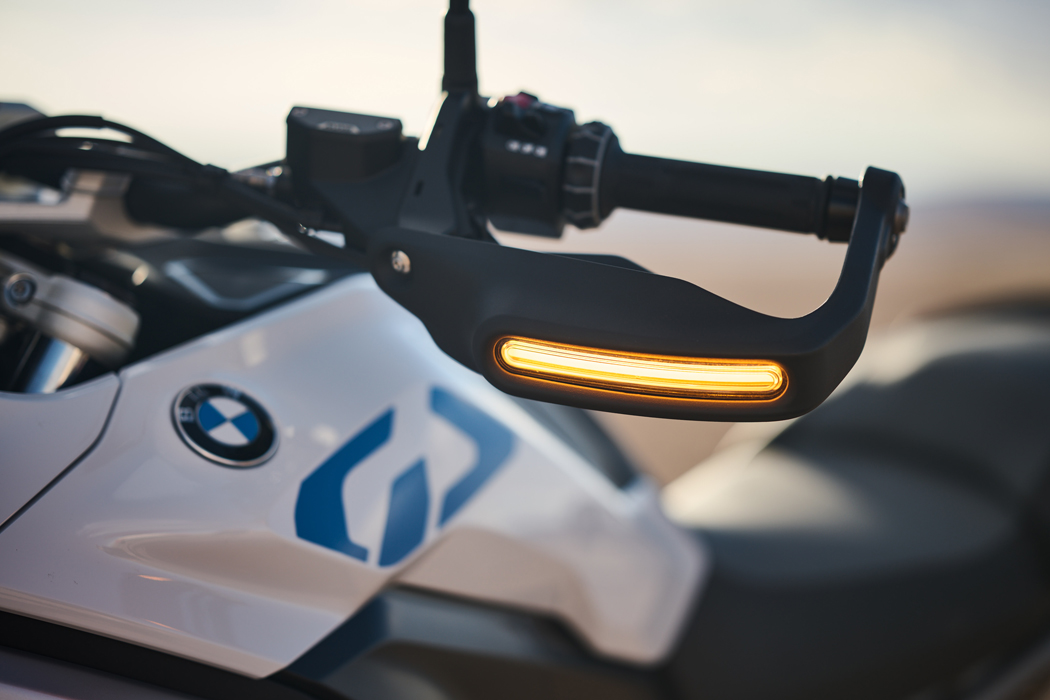
So, more power, better handling, a cleaner, less complex design and less weight – best adventure bike ever? Look, if you’re heading around this country on a mix of roads, with not too much sand or hardcore dirt then I’d say some can do it just as well, but definitely none better. But manage your expectations and put down that BMW GS pamphlet of dreams. This is still a big bike with compromises that make it the brilliant all-rounder it is. Yes, you can tackle some god-awful terrain on a GS… but it’ll be easier and safer on a smaller bike – think F 900 GS! And it’s best you get real; really think about what you need rather than what’s cool, because with a $28,280 (ride away) starting price there’s no point being squashed and broke.

There’s a reason the GS is so popular. It’s a bike that has always combined some dirt prowess with mega long-distance comfort, beautiful road manners and all manner of high-end tech. The R 1300 GS does it better, and I can’t understate what a difference its less-generous proportions have made. I know 12kg isn’t earth-shattering, but it’s noticeable and there is no way to ignore the smaller stature of the latest GS and that has a big impact on every aspect of the ride experience, especially regarding confidence.

For those adventure riders who are apprehensive about taking their mega-adventure bike off-road, BMW has taken some of the fear and loathing out of that experience for you. Let’s hope its rivals play the same game.
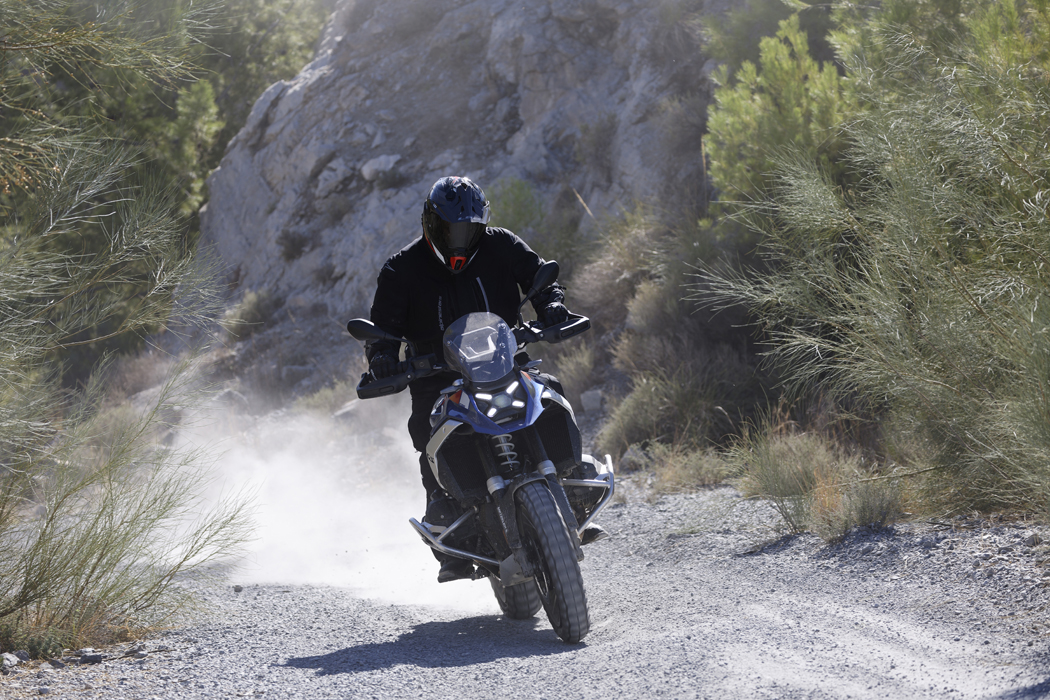
TEST PETE VORST PHTOGRPAHY BMW MOTORRAD